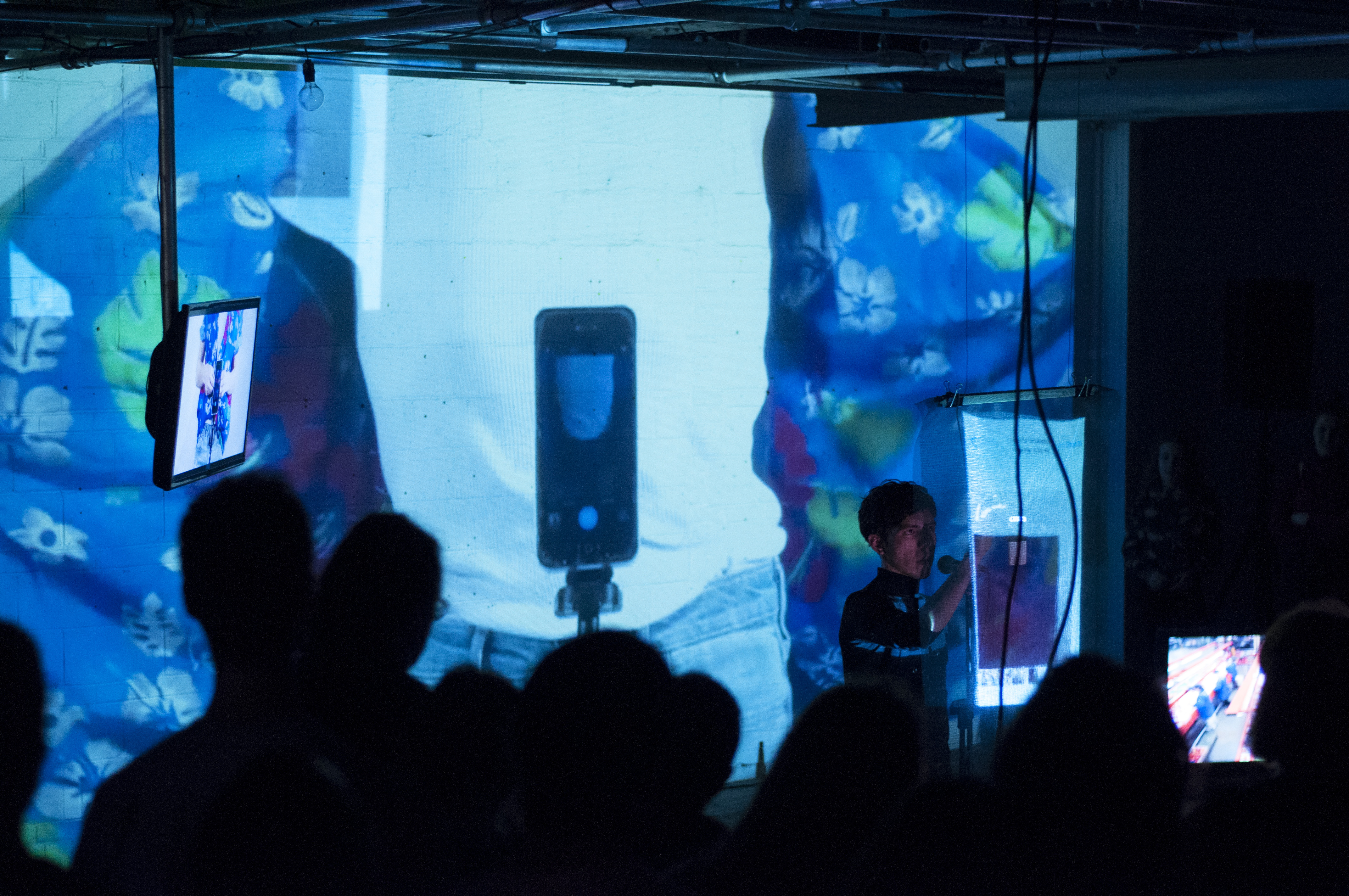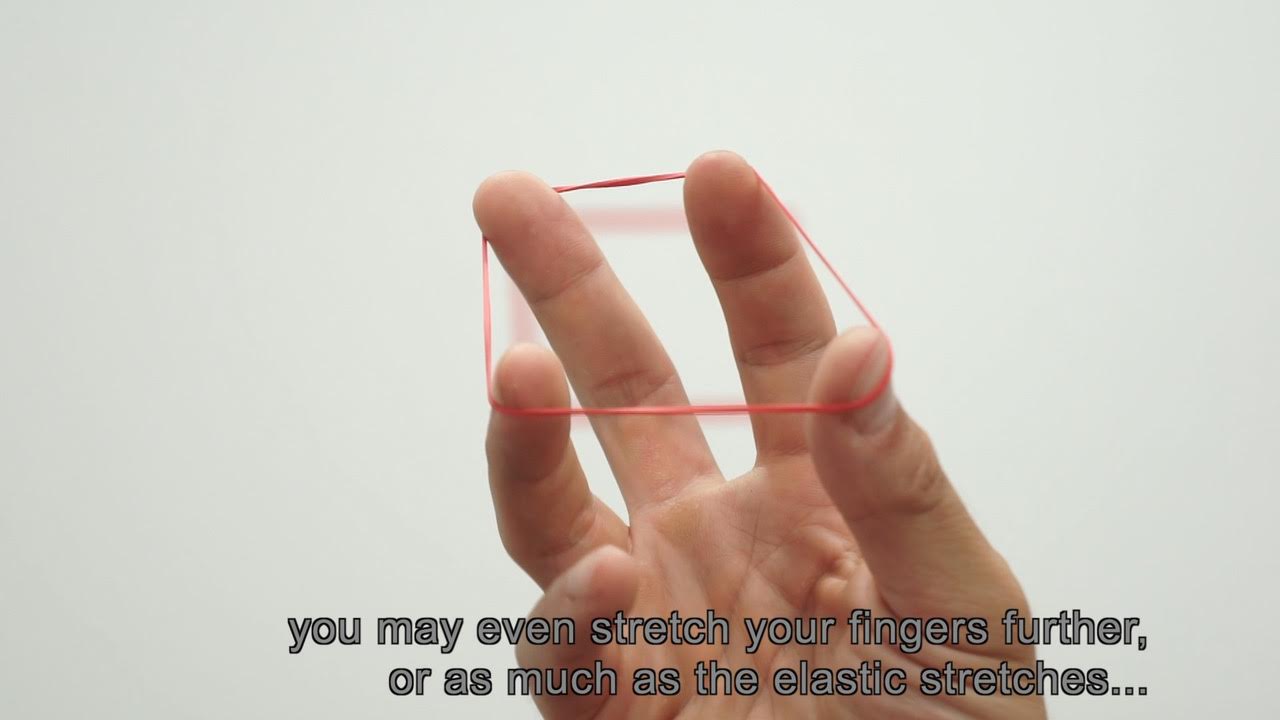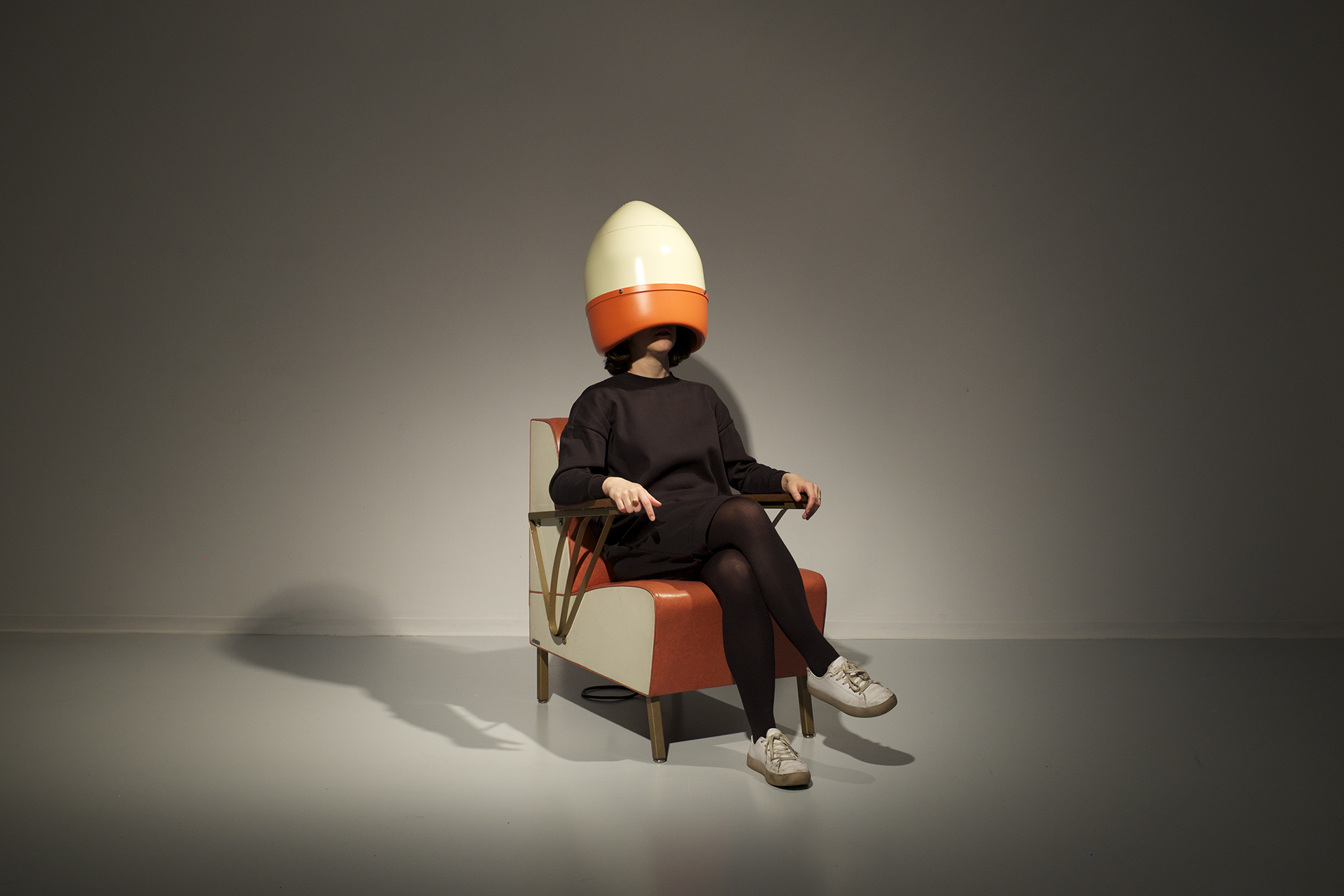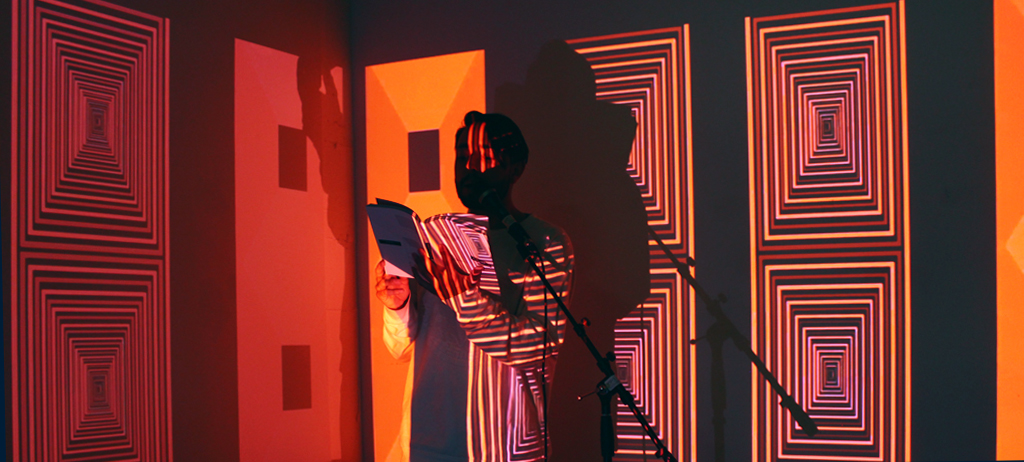Research Presentations
Wednesday, October 11th
Anastasia Ferguson
The “Magic” of New and Antiquated Technologies
My research proposes to investigate inherent the “magical” properties of visual illusions and to question how 19th century technologies or devices correlate, engage, and inform contemporary and digital forms of technology. In it’s most basic sense, magic is the feeling one experiences during an event that is both beautiful, strange, and out of the ordinary. It is the attempt to connect all that is beyond reality through the creation of a moment wherein our understanding of reality is called into question. It requires a willingness to suspend disbelief and sacrifice realism.
Once considered scientific and technological advancements, displayed throughout Europe in “Scientific fairs”, optical illusions such as Pepper’s Ghost and the magic lanterns of the Phantasmagoria would now be considered basic “optical tricks”. Within my research it is my intention to recreate these antiquated illusions using a combination of both new technology and old methodology in order to determine how the methods and technology of the past has informed and produced the technology of today. Along side this material research is my interest in the viewer’s sense experience and perception. Is our current interest in visual and sensorial illusions an echo from the past? What is it about the experience of magic that is seemingly timeless?
Anastasia Ferguson, originally from Saskatoon Saskatchewan, Anastasia moved to Montreal in 2009. In 2011 she was accepted into Concordia’s Mel Hoppenheim School of Cinema, where she completed her BFA in Film Production. She is currently an MFA candidate at Concordia University specializing in Intermedia.
Francisco Gonzalez-Rosas
Networked Self-representation: From the mobile screen to the video installation

My presentation at Elastic Spaces Symposium will foreground the tensions involved in the phenomena of selfies, understood as networked digital representations produced globally, in first person. Following the social political implications of this type of images, which imply a set of performances of race, gender, sexuality and social class, I created two pieces during the last year.
The audiovisual performance “Dating for export”, which integrated a soundscape performed live and the prototype of a 3D film, in which I quoted the standardized fashion in which users showcase themselves in the profiles of gay dating apps. As well, the multichannel video installation “Audiovisual Jungle: latino bodies & export fruit”, that combined a large projection and 8 LED monitors. Inspired by mobile screen imagery, as well as using it as the primary
medium, both pieces aimed to expose the objectification and fetishization of latino bodies, at once exotized for white consumption and facing exclusion in the North American context.
Francisco Gonzalez-Rosas is a Chilean mixed media artist. His work is located at the intersection of sound, video and performance, exploring questions on self representation, gender, ethnicity and sexuality and their link to technology and digital media. He is Currently based in Montreal, Canada, doing the MFA in Intermedia at Concordia University. http://franciscogonzalezrosas.com/
Paul Landon
Forgetting Cinema
Paul Landon explores urban space. His wanderings are transcribed through individual processes of mediatisation: of recording, editing, archiving and reconstruction. Landon’s work is structured through the uncompromising physicality of architecture and the modern urban landscape, positing these as sites inscribed with forgotten promise and effaced monumentality. At the Elastic Space Symposium, Landon will present two aspects of his practice that will lead to his participation in the events in Bath in 2018: video installations made using a rotoscoping technique that animate views of the modern city and hand-made miniature models of abandoned cinemas. Both of these approaches respond to the three-dimensional experience of the moving image and its inherent relationship with modern urban space.
Paul Landon graduated from The Nova Scotia College of Art and Design in Halifax, Canada and from the Jan van Eyck Academie in The Netherlands. He recently completed a Doctorate in Fine Arts at the Finnish Academy of Fine Arts in Helsinki. Paul Landon lives and works in Montréal, where he is a professor of Media Arts at the École des arts visuels et médiatiques of UQÀM. http://www.paullandon.com/
Robert Luzar
Spacing and Counter-demonstrations.

Do it! Act! Perform! For what? The presentation questions these imperatives through Demonstrations, an ongoing series of digital videos and performances that interrogate duration, embodiment, and self-perception. Demonstrations are works that partly appear on the Web (online) as ‘how to’ videos – http://www.robertluzar.com/demonstrations.html –, using plane materials such as elastic bands, masking tape – and even a pretzel. Viewers are given these works as actions they may or may not do. This suspension of engagement, or spacing, indicates a certain ‘counter-demonstration’. The prefix ‘Counter’ indicates a paradoxical experience of dislocation, spacing times in which the work takes place. What is the role of space, online and offline? And what is the nature of un-working, doing or viewing works that counter the effectiveness of process based Work? The presentation will therefore unpick such questions, examining how processes can be heuristic, experientially problematic, works stretching out in different times, distending in spaces virtual and real, online, offline – and perhaps even out of line.
Robert Luzar is an artist, writer and educator. He is Senior Lecturer in Fine Art at the Bath School of Art and Design; his works are exhibited globally in venues such as Palazzo Loredan Venice (IT), Torrance Art Museum (USA), Talbot Rice Gallery (UK), DRAWinternational (FR), Katzman Contemporary (CA), and Künstlerhaus Dortmund (DE). His writings on art, culture and critical theory are published in books and journals such as Nancy and Visual Culture (Edinburgh University Press 2016), Mnemoscape, and Theatre and Performance Design (Routledge). http://www.robertluzar.com/
Lee Scott
Finding Lucy yesterday: temporal dislocation via binaural sound in the mobile opera, ‘Fragments’
Fragments is an opera for mobile media that tells the story of an unnamed man who awakes dazed and confused under the shadow of the Beau Nash obelisk in Queen’s Square, Bath. He has little memory of past events, yet can vaguely recall relaxing in the city with his partner Lucy the day before. He quickly reaches for his iPhone to find several frantic text messages and missed calls from Lucy, who seems scared and unaware of her surroundings. She is lost, and alone. He is scared, and desperate to find her. What unfolds is a location-based affective story, told through song, ‘flashback’ videos, and binaural soundscapes of Bath city centre that flux between the past and present. We (the player) guide the direction of the opera by taking responsibility for the protagonist – leading him across the city to collect fragments of lost memory. This is an empathic journey. Along the way, we tune in to all the disorientation, misremembering, self-doubt and distress felt by Lucy’s partner…
Lee Scott is the Subject Leader of Creative Computing, Bath Spa University.
Sam Wilkins
Composites: The use of painting in film and visual effects
Sam Wilkins will present his latest practice based research around animated landscape paintings and some of the background that supports this, including image genealogy, modes of display and the idea of ‘the frame’.
Sam Wilkins is filmmaker, motion graphics artist and educator. He works in both the commercial and fine art field on a broad range of outputs including works for Paramount, Nokia, Bupa, Xerox, B&Q and also for artists such as Amanda Beech, Jennet Thomas, Janet Hodgson and Rona Lee. Sam’s own research explores the links between painting and moving image works, especially in the areas of matte painting and visual effects composites. He is interested on how artists use visual effects techniques in their work and also how filmmakers use painting.
Thursday, October 12th
Brigitta Zics
The role of experience in art
The talk investigates the role experience plays in art and how this approach gained new precedent once technologies allowed integration and reciprocity between viewer and artwork. Zics will illustrate her practice through her ‘Experiential Art Manifesto’ writings; whilst also introducing her most recent body of work inspired by the scientific concept of collective motion.
Brigitta Zics is an award-winning artist who creates works with visual and material sensitivity that seeks to fashion new experiences. Her work often explores mixed-media forms combining various techniques and emerging technologies. www.brigittazics.com
Philippe Battikha
Halo

At the heart of my practice lies an obsession with sound. Following in a tradition of sound-artists and composers such as Max Neuhaus and R. Murray Schafer, my work centers around the belief that in today’s visually driven society we must pay closer attention to the impact and importance aural environments play in our lives.
‘Halo’ is the first of a series of immersive object oriented sound pieces that question the role of visual aesthetics in the luring towards sound experiences. Fitted with a 4 channel sound system in the bonnet of a salon hair-drying chair, ‘Halo’ employs ambisonic techniques and technologies in an attempt at diffusing three dimensional sound to the listener. I will speak of the accomplishments of this research, while also sharing some of the setbacks and challenges of diffusing sound in space.
Philippe Battikha is a Montreal based musician, composer, sound-artist, and community organizer. From live performances and recordings, to sound installations and film scores, his work is embedded with a certain fragility and introspection that is at once inviting yet unsettling. His most recent work Sub· text, was presented at the Musée National des Beaux-Arts de Québec (MNBAQ) as part of a group show that explored the new Pierre Lassonde pavilion’s architecture. http://philippebattikha.com/
Santiago Tavera
Virtual Narratives of Dislocation

This is a paper presentation of, Translational Spaces, a project that consists of a series of 2D and 3D animations combined with written fictions of virtual narratives of dislocation. This project investigates processes of self-identification, social interaction and physical perception through multimedia works, that emerge from digital and textual components. Translational Spaces combines various projects where multiple layers of digital and physical elements come together. Through Interactive and immersive gallery installations, along with participatory workshops, this project questions the notion of a homogeneous self within multiple physical and virtual realms. Dislocation, familiar to those who have experienced cultural migration, has become more apparent as subjects now live as virtual immigrants within the realm of the digital. In cyberspace, subjects and objects exist as images that are constantly moving from one screen to the next; a virtual dislocation similar to the one of a migrant body. The sense of being present and belonging to a specific place, is constantly affected by today’s digital culture. As augmented digital elements merge with the physical world, a mixed reality emerges in which subjects and objects become re-presentations of themselves. This paper will be published in the upcoming ISEA 2017 Special Issue of the Journal of Virtual Creativity- Intellect Books.
Santiago Tavera is an interdisciplinary Canadian and Colombian artist. He explores virtual narratives of dislocation and perception through the construction of interactive and immersive experiences. His work intends to place bodies in spaces of translation between the physical and virtual, to simulate the state of a displaced body in a constant process of being and becoming. His work has recently been presented at Montreal’s 2016 International Digital Art Biennial (BIAN), The Wrong- A New Digital International Art Biennial (online exhibition), the 2017 Ottawa International Animation Festival, and the Besides the Screen 2017 conference in Brazil, as well as the 2017 International Symposium on Electronic Arts in Colombia. www.santiagotavera.com
Richard White
Sweet Waters: walking as epistemology
A walking arts practice exploring intra-action of body and place. The walks are ephemeral pieces performed live by the walking participants, whose presence resonates and is extended via social media. The social media forms part of a materialising of the experience that seeks to extend its presence. This presentation focuses on the Sweet Waters cycle of walks hosted by Richard in June 2017. The walks set out to sense legacies of slave-ownership in Bath and along the River Avon, culminating in a 30 mile walk from Avonmouth on midsummers day.
Richard White is a socially engaged artist/researcher with specialist interest in walking arts practice, social media and intangible heritage. Senior Lecturer in Media Practice at Bath Spa University.
Lydia Halcrow
Drawing an embodied line through space, place and time
A presentation of research that relates to recording the embodied experience of repeated walks along two stretches of the North Devon and North Somerset coastlines. Lydia employs methods that simultaneously use different processes to record aspects of the walk and the place; to capture the texture, shape and visual snapshots that surround her.
Lydia Halcrow is a practice-based PhD researcher at Bath School of Art and Design, she works primarily with painting, drawing and print-making creating a response to walks and time spent in a place exploring her embodied experience of walking there; observing and recording the surface textures and half submerged histories.
